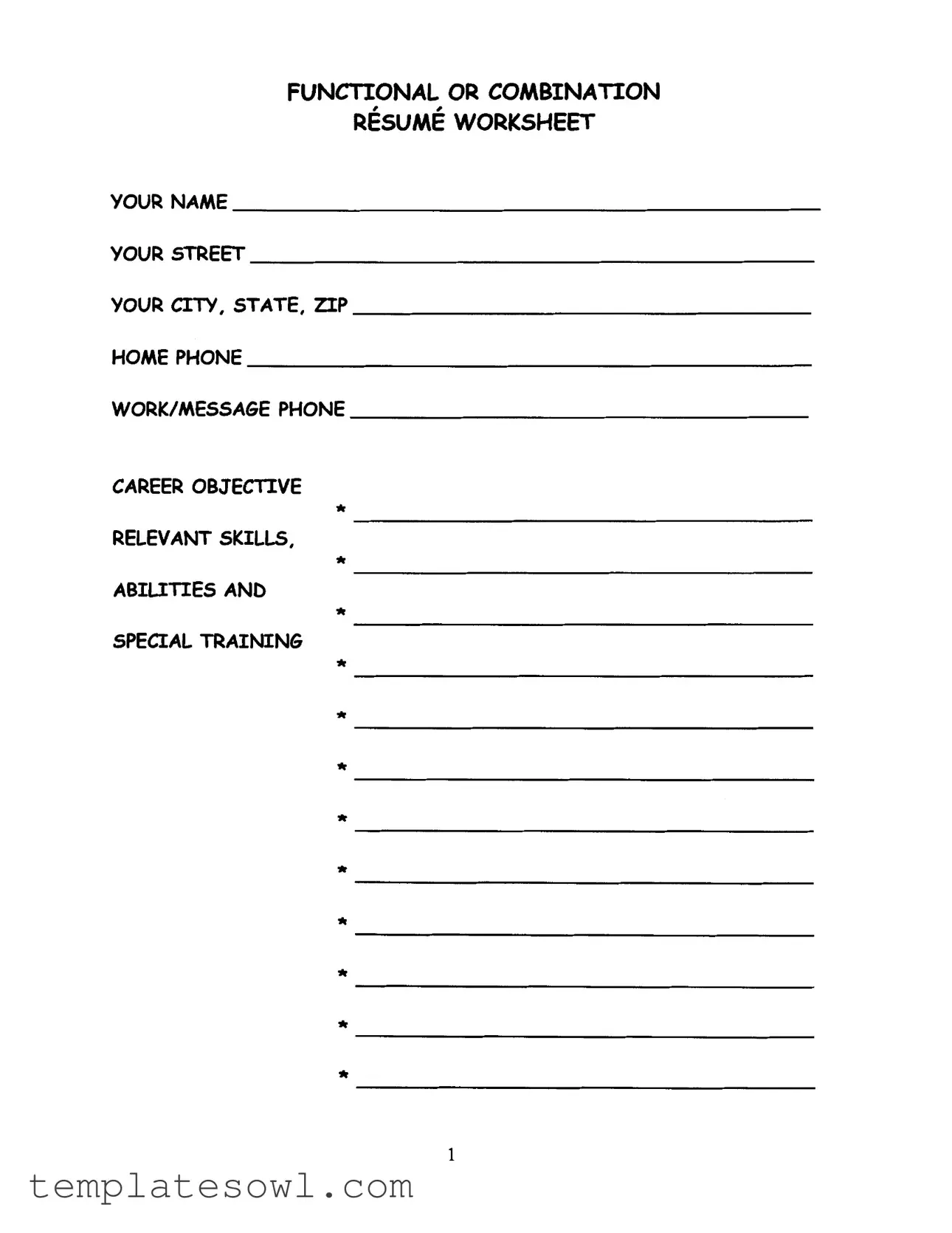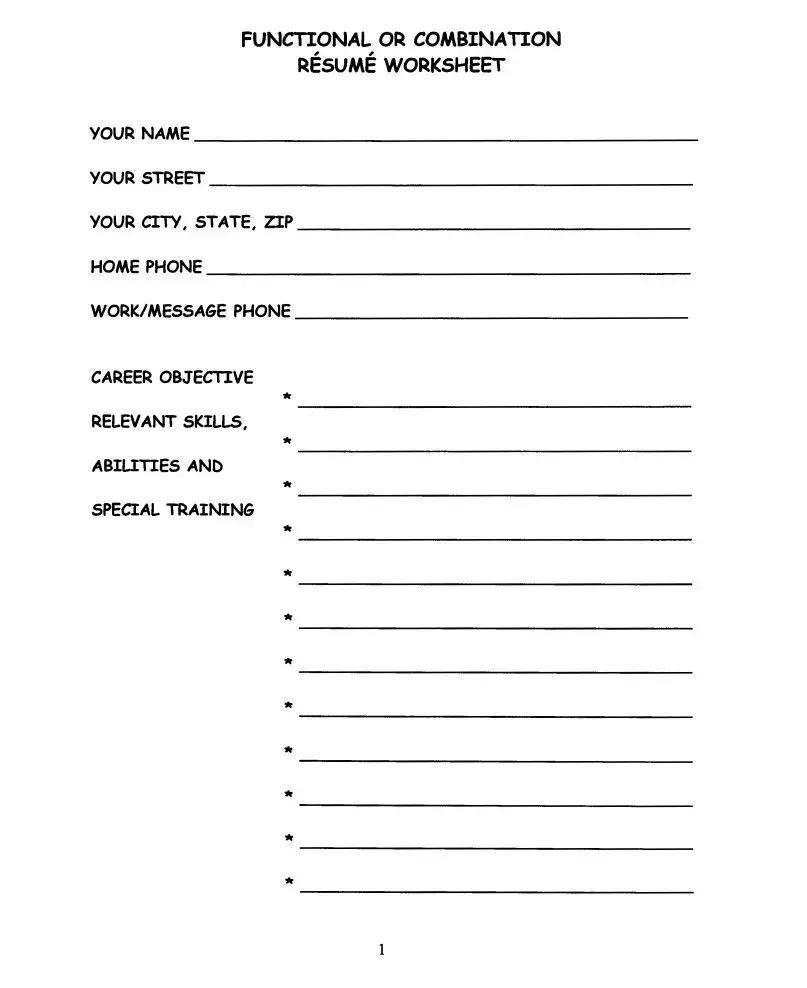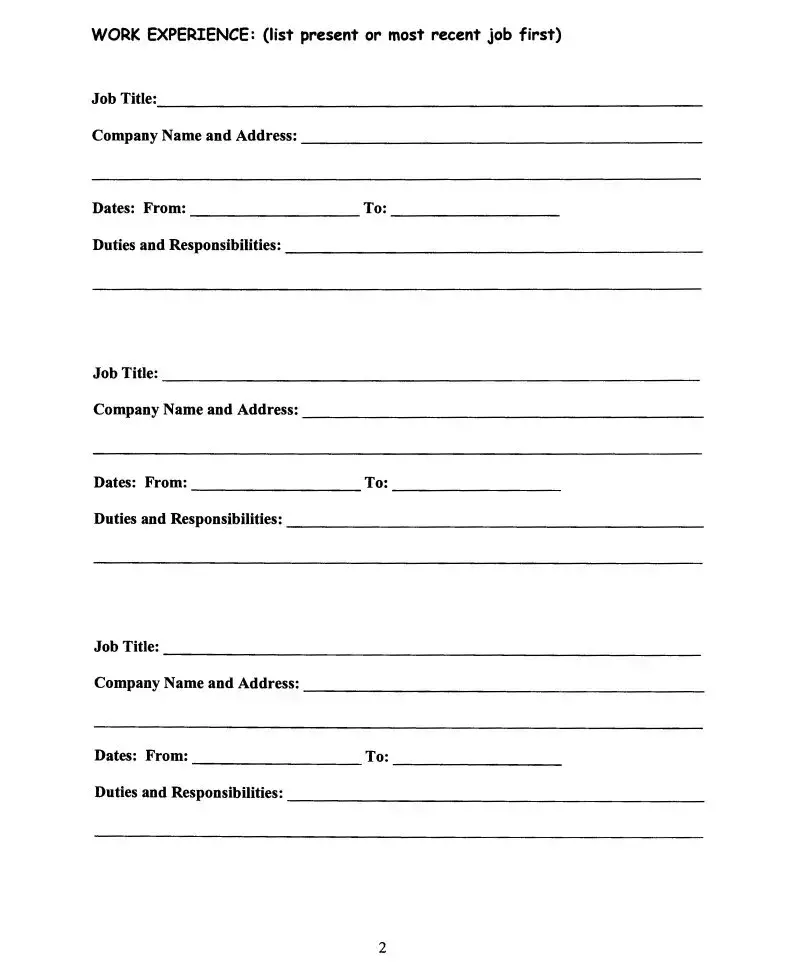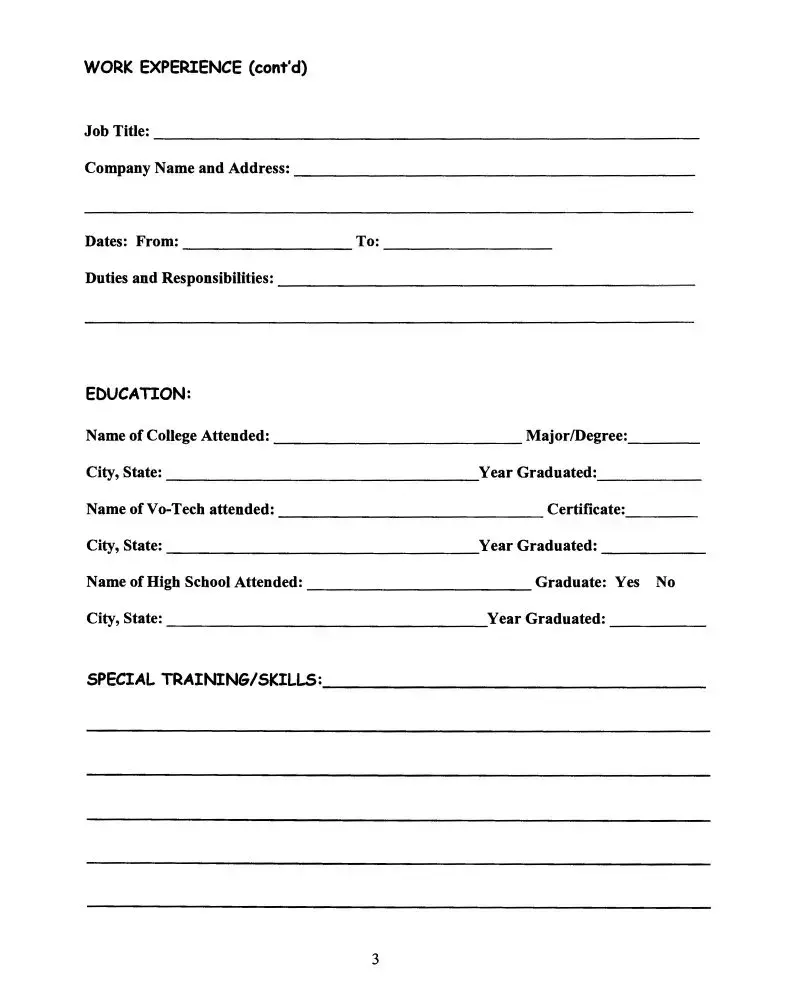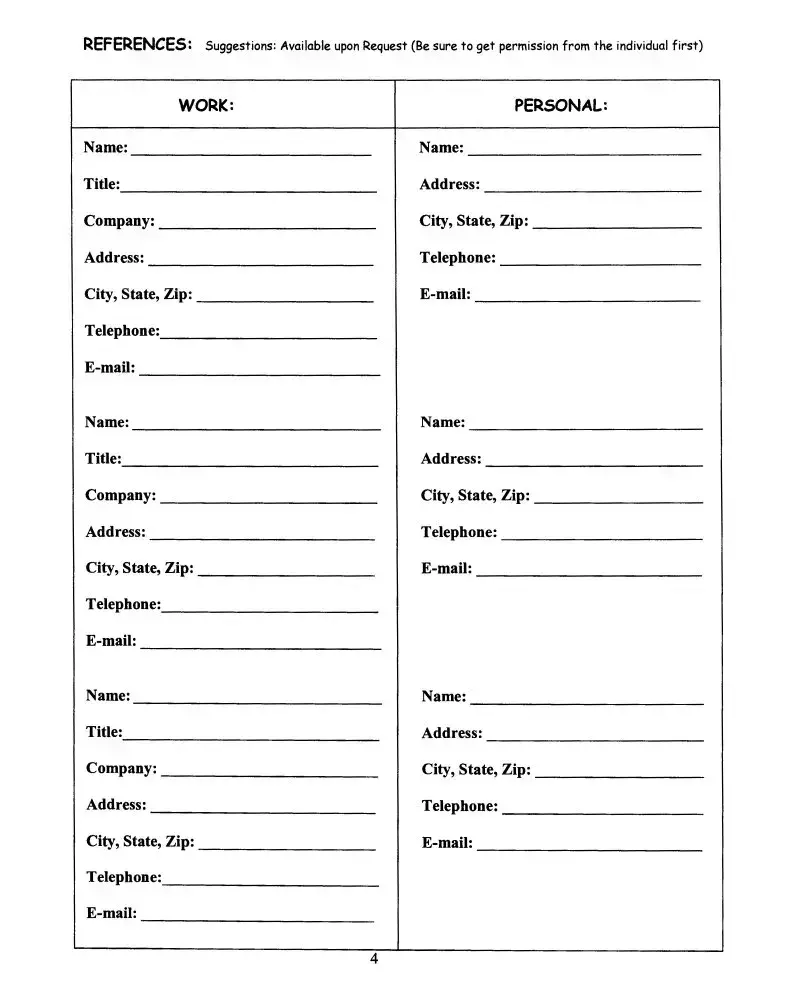What is the Fill In The Resume Worksheet form used for?
The Fill In The Resume Worksheet form serves as a tool to help individuals organize the essential information needed to create a professional resume. It guides users in detailing their career objectives, skills, work experience, education, and references in a structured manner, making the resume-writing process smoother and more efficient.
How should I fill out the work experience section?
In the work experience section, start with your most recent or current job and provide key details in a logical format. Include your job title, the name and address of the company, and the dates you worked there. Be specific when describing your duties and responsibilities—use action verbs to highlight your achievements and contributions. If you have multiple past jobs, continue to list them in reverse chronological order to maintain clarity.
What do I include in the career objective?
Your career objective should succinctly express your professional goals and aspirations. Think about what position you are targeting and how your skills align with those needs. A well-crafted career objective can set the tone for your resume and help potential employers understand your motivations. Keep it clear and focused, ideally limiting it to one or two sentences.
Are references required on the worksheet?
While references can be included, it is common practice to note that they are "available upon request." This allows you to maintain privacy for your contacts while ensuring you can provide professional references when necessary. Just remember to ask individuals for their permission before listing them as your references.
What if I have gaps in my employment history?
Gaps in employment history can be addressed through your resume design and how you present your experience. It’s important to be honest; if you were engaged in activities such as education, volunteering, or caregiving during those periods, consider including them. This can demonstrate your ongoing skill development or commitment to community service, thus framing your time away from the workforce positively.
Can I add additional sections to the worksheet?
Absolutely! The Fill In The Resume Worksheet form is a flexible tool. You can add additional sections that you believe would enhance your resume, such as certifications, projects, or volunteer experience. Just be careful not to overload your resume with information; focus on the most relevant aspects of your background that will appeal to potential employers.
